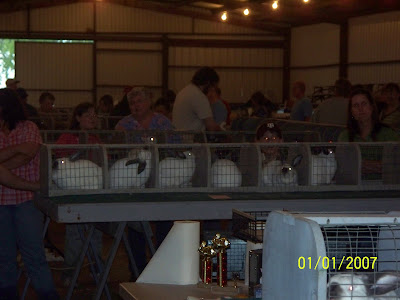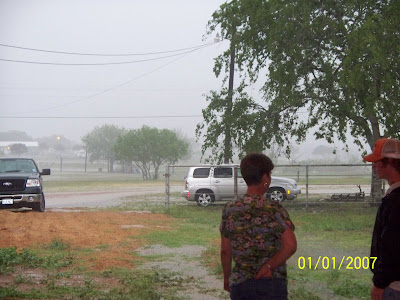Our wonderful friends Jessica and Caley, of BumbleBeary’s Angoras in Canada, were recently plagued with illnesses affecting their rabbits. Jessica gave me permission to use her story in our blog and share with the masses so that we can all learn from this tough experience she and her family endured. Jessica wrote in her blog their situation of how wool block and GI stasis struck their rabbits and the ordeal they underwent.
Jessica wrote, “One of my fawn doe Bbeary's Solstice got wool block over the winter and I tried very hard to cure her without cutting her down, but it was not happening. Thus, she is now clipped--a grave disappointment--when she only needed one more leg to grand and she was one of very few I would have to show. The good news is that she's back to normal, and that’s all that matters.”
However, another of her rabbits, Bbeary’s Tila Tequila, was subject to a horrible case of GI Stasis. This came quickly and without warning. “Tila gave birth to 5 babies with Divinci on March 2nd, she went off her feed two days before kindling normal; but she didn't start eating again. Even days after kindling, she stayed huddled up in the corner of her cage. A few days passed since kindling, still no change and now she has 5 mouths to feed. We decided to take her to the vet.
The vet does x-rays ultra sound to check for any stuck kits, but there are none--a relief. She is diagnosed with Stasis and we are given pain medication and IV fluids for her. IV's are probably the most important thing to have to a rabbitry especially with kindling does. It's good if you can get a vet to show you how to put them in properly. Buy the fluid bags from the vet, as this can save you a lot of money as the bags of fluids run about $15 each, whereas a vet will charge you roughly $40 just to put the needle in and that doesn't include the cost to see the vet. All those charges can really add up. We also gave Tila, Oxbow critical care, by mouth. If you don't have critical care you can also grind up their regular pellets and add yogurt or a high calorie paste such as STAT.
A week goes by, Tila still hasn't eaten or drunk on her own. Her poops are [similar to the size poops expelled by] babies. The [babies] are severely underweight due to Tila’s starving condition, although we continue to supplement her and do IV's a few times a day. The babies are barely getting enough to eat and Tila's milk dried up. This is good and bad. Good for Tila so she can put more energy into regaining her own health. Bad for the babies as they are still so young and haven't had the proper nutrients to set up their bacteria balance. So we cross out fingers and start feeding the babies KMR. They start gaining weight and seem healthy, but still behind from their initial lack of nutrition. They make it to two weeks and their eyes open. The colours are fabulous; two blacks, a blue, a chocolate and two broken blacks--one absolutely perfectly marked. Ok so now were attached and hand feeding babies. [This] certainly makes you love them that much more. We are hopeful. They are looking good all things considered. Wednesday, March 18, comes around. I wake up to find the Blue kit dead. Strange, as he was eating well and completely fine the night before. The only thing noticeably wrong when I found him was a bloated stomach. The rest of the week goes by and his/her littermates begin die. This time we notice the symptoms: strained breathing, an unwillingness to eat, closed eyes, and lastly, the bloated stomach. A few hours after these symptoms appear the baby dies. The last one, the little chocolate [colored] died yesterday. We are heartbroken. We are planning on having the babies checked out to find out what went wrong so suddenly that caused them all to die. We are certain, though after this experience, we will not try and raise such young kits on formula. We did breed another doe at the same time as Tila, but she missed. It would have been ideal to foster them as they were healthy and there is no doubt in my mind they would have survived if Tila hadn't gotten sick. The good news is Tila in on the mend, eating and drinking on her own now. [She] is still not eating enough, but the healing process is very slow.
Next time you have a healthy litter, keep in mind how lucky you are, how many things could have gone wrong. It was hard [for us] to even go on the computer and see everyone else's thriving litters when [ours were] struggling--even when [we did] absolutely everything [we could].
Here is an excellent article on GI stasis:
http://www.bio.miami.edu/hare/ileus.html .
With all this said I highly doubt we will be attending any US shows this year and very few Canadian shows. We will also be cutting our herd back a bit and will have some nice animals for sale. I hope no one else goes through this heartbreaking experience.”
Jessica and her family are doing a lot better now and thank all of their friends that have offered full support and prayers in these difficult times. The great news is that they are moving forward, too, and have decided to continue their zest for showing their beautiful English Angoras!
Thank you, Jessica and Caley, for allowing Texas Angora Blog to share your heartfelt story of triumph and disappointment and being able to bounce back from adversity.


























 der=0>Road To Angora's: B'beary's Diego Rivera and
der=0>Road To Angora's: B'beary's Diego Rivera and 

















 The always awesome Raffle Table
The always awesome Raffle Table




